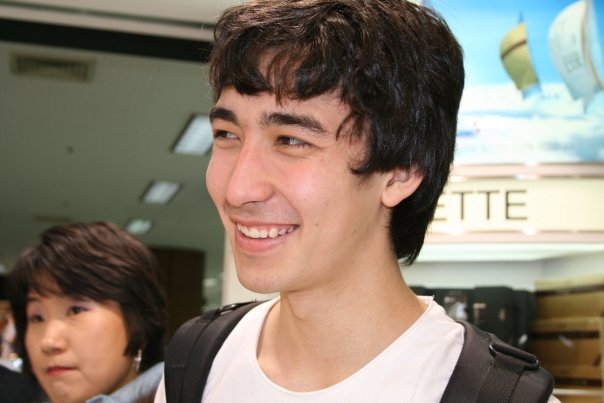Team:Guelph/Team
From 2008.igem.org
| Line 25: | Line 25: | ||
|- | |- | ||
| | | | ||
| - | '' | + | ''Microbes are found in every nook and cranny of the entire planet, and multicellular organisms are no exception. Plants and animals are found to contain huge numbers of bacteria and fungi that help with nutrient absorption, produce beneficial compounds, fight off pathogens, or often are even pathogens themselves. We are interested in taking advantage of some of these microbes to deliver transgenic payloads for the benefit or modification of the host organism. These might be called GM endosymbionts. On the human side, we would like to introduce the carotendoid metabolic genes from a well studied soil microbe called Erwinia urodevora into human probiotic microbes which will survive and colonize the intestine for stable production of the essential human nutrient, pro-vitamin A. Time permitting, we will attempt to enhance carotenoid accumulation by increasing plasma membrane sink by overexpression of the fumarate reductase operon. Millions of humans suffer from vitamin A deficiencies across the world, resulting in blindness and death which could be mitigated by symbitic production of this important vitamin. We will also attempt to get corn endosymbionts to produce pro-vitamin A; a function usually performed by the plant itself. |
| + | |||
| + | A more basic project will focus on RNAi signal delivery by a corn plant endosymbiont to silence corn genes. Most euaryotes react to double stranded RNA by copying it and chopping up any mRNA with the same sequence, while prokaryotes do not seem to posses the same response. Since bacteria like K. pneumonii live in large stable populations within corn plants, it is believed that as individual bacteria grow, die and lyse within the plant host, they will release RNAi transcripts into the sensitive host during the entire life cycle of the plant, which will silence the targeted gene and show a phenotype indicating gene function. Bacterial Induced Gene Silencing (BIGS) will be a useful, quick, and stable alternative for plant functional genomic research. '' | ||
|[[Image:Team.png|right|frame|Your team picture]] | |[[Image:Team.png|right|frame|Your team picture]] | ||
|- | |- | ||
Revision as of 20:32, 1 August 2008
| Home | The Team | The Project | Parts | Notebook | Modeling | Links |
|---|
Contents |
(Under construction - Abstract re: Team)
| You can write a background of your team here. Give us a background of your team, the members, etc. Or tell us more about something of your choosing. | 
|
|
Microbes are found in every nook and cranny of the entire planet, and multicellular organisms are no exception. Plants and animals are found to contain huge numbers of bacteria and fungi that help with nutrient absorption, produce beneficial compounds, fight off pathogens, or often are even pathogens themselves. We are interested in taking advantage of some of these microbes to deliver transgenic payloads for the benefit or modification of the host organism. These might be called GM endosymbionts. On the human side, we would like to introduce the carotendoid metabolic genes from a well studied soil microbe called Erwinia urodevora into human probiotic microbes which will survive and colonize the intestine for stable production of the essential human nutrient, pro-vitamin A. Time permitting, we will attempt to enhance carotenoid accumulation by increasing plasma membrane sink by overexpression of the fumarate reductase operon. Millions of humans suffer from vitamin A deficiencies across the world, resulting in blindness and death which could be mitigated by symbitic production of this important vitamin. We will also attempt to get corn endosymbionts to produce pro-vitamin A; a function usually performed by the plant itself. A more basic project will focus on RNAi signal delivery by a corn plant endosymbiont to silence corn genes. Most euaryotes react to double stranded RNA by copying it and chopping up any mRNA with the same sequence, while prokaryotes do not seem to posses the same response. Since bacteria like K. pneumonii live in large stable populations within corn plants, it is believed that as individual bacteria grow, die and lyse within the plant host, they will release RNAi transcripts into the sensitive host during the entire life cycle of the plant, which will silence the targeted gene and show a phenotype indicating gene function. Bacterial Induced Gene Silencing (BIGS) will be a useful, quick, and stable alternative for plant functional genomic research. | |
| Team Example 2 |
Who we are
- Dave The RAVE Johnston: This man has travelled the world and has brought back the proud chewing gum of different nations to prove it-- he's a calm and collected PhD student in plant agriculture; he aspires to feed hungry bodies with food and hungry brains with delicious science; his idealistic vision transforms us like a broad host range plasmid.
- Timothy Gingerich: Our Ontario Veterinary College (OVC) affiliate; this PhD student guides us with extensive knowledge and practical experience in genetic techniques in both prokarya and eukarya.
- Dr. Manish N. Raizada: Our technical advisor and representative; Dr. Raizada has kindly donated his lab and legal know-how to keep our projects running.
Operation SynthOp (Synthetic Operon Subproject)
- Brendan Hussey: Our very own renaissance man; athletic and dedicated to science, he is presently balancing as many as three genetics projects simultaneously and still has time to concatenate primers together; he can explain the most convoluted of concepts with little more than a diagram and ten words.
- Lisa Ledger: An interdisciplined being; she is equally well tuned in the lab, as well as in bioinformatics; this quick-witted well-rounded scientist can cure what ails your plasmid.
- Tin Vo: A deeply reflective individual-- silent in his contemplation; precise in his execution-- He is our laboratory ninja.
The Interference Brigade (RNAi Subproject)
- Jennifer Jennivo Vo: She is dedicated and quick learning; with her pleasant disposition, she can coax a bacterial culture into growing with just her smile.
- Mufaddal Moff Man Girnary: He is well-read and well-rounded; this gentleman adds a layer of intrigue and unpredictable insight to the team.
Nerve Endings (Legal, Business and Gophers)
- Eddie LOUD Ma: The team gopher-- forging connections with professors and chairs, keeping the minutes and doing the occasional transformation; thankfully, hunting season is closed.
Thanks to Our Contributors and Supporters
- Dr. Emma Allen-Vercoe: Thanks for _long_list_
- Dr. Deborah Stacey: Thanks for _long_list_
- New England Biolabs: Enzymes and PCR reagents - wet lab essentials!
- Integrated DNA Technologies: Primers and Ultramers - the workhorses of PCR!
- Ethan Johnston and iGEM Minnesota Team Time Bomb: With previous experience in carotenoid genetics they were very fast and supportive in sending us some genes so we could stand on their shoulders (they are giants)!
- iGEM Calgary Ethics: Ethics, economics, and potential scoping study - if these technologies will ever impact the world, it has to be understood how we can develop them and whether they might be accepted!
What we did
(Provide proper attribution for all work)
 "
"














